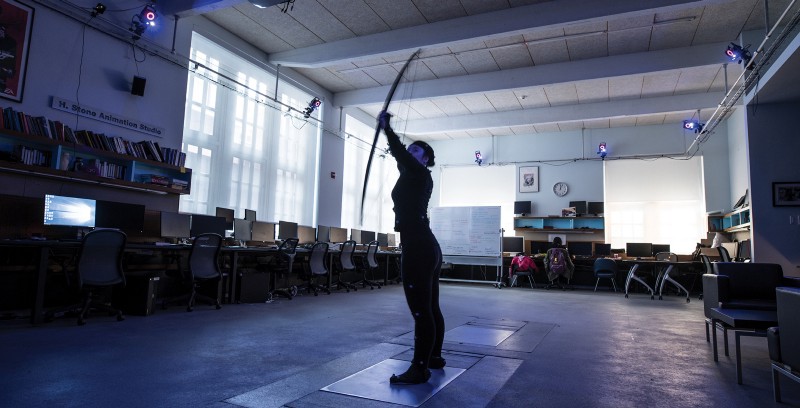
A virtual world for an ancient society
Last fall, Computer scientist Norman Badler co-taught an anthropology course with Clark Erickson of the School of Arts and Sciences and the Penn Museum. In an Omnia article, Susan Ahlborn describes how they helped students populate a virtual landscape with people engaged in everyday tasks.
One student wields a bow and arrow, another a stone axe. A third lies in a hammock. It’s all part of professor of anthropology Clark Erickson’s resolution to put people into our picture of the past, and to understand how what they did affects our world today.
Most depictions of past civilizations have no human context: They’re sterile computer images of recreated temples or museum displays of relics. Erickson realized his own tendency to unconsciously dehumanize the past when he was a graduate student. “Archeologists learn about people through their stuff, so the stuff sometimes becomes more important than the people,” he says. “We make stuff the subject of sentences. Show stuff on slides. I decided as much as possible to make people the subject of the sentence.”

During his career studying the relationship between people and land in pre-Columbian agricultural societies in Peru and Bolivia, Erickson has authored three books and dozens of articles, each illustrated with drawings and paintings produced by an artist colleague, Dan Brinkmeier. As Curator-in-Charge of the American section of the Penn Museum, Erickson has designed innovative exhibits that include modern items next to ancient recordings of Native Americans, and even projects by contemporary artists.
A virtual past world, “The Pre-Columbian Hydraulic Landscape of Baures, Bolivia,” is Erickson’s latest project to make people the subject of the sentence. He’s involving undergraduates in this endeavor — they’re being recorded as they use implements from the era, to create animations of the people of that time and modeling architecture, earthworks, and individual objects in 3-D, many from the collections of the Penn Museum. These will become part of an immersive digital world that will let us see that era complete with its inhabitants living everyday life in their cultural landscapes.
For Erickson, understanding these societies is also about taking human agency and intentionality into account in our view of the world today, for a long-term perspective on environmental change, biodiversity, and sustainable management. He believes that humans have been leaving their mark on the Earth — for better and for worse — for a very long time.
